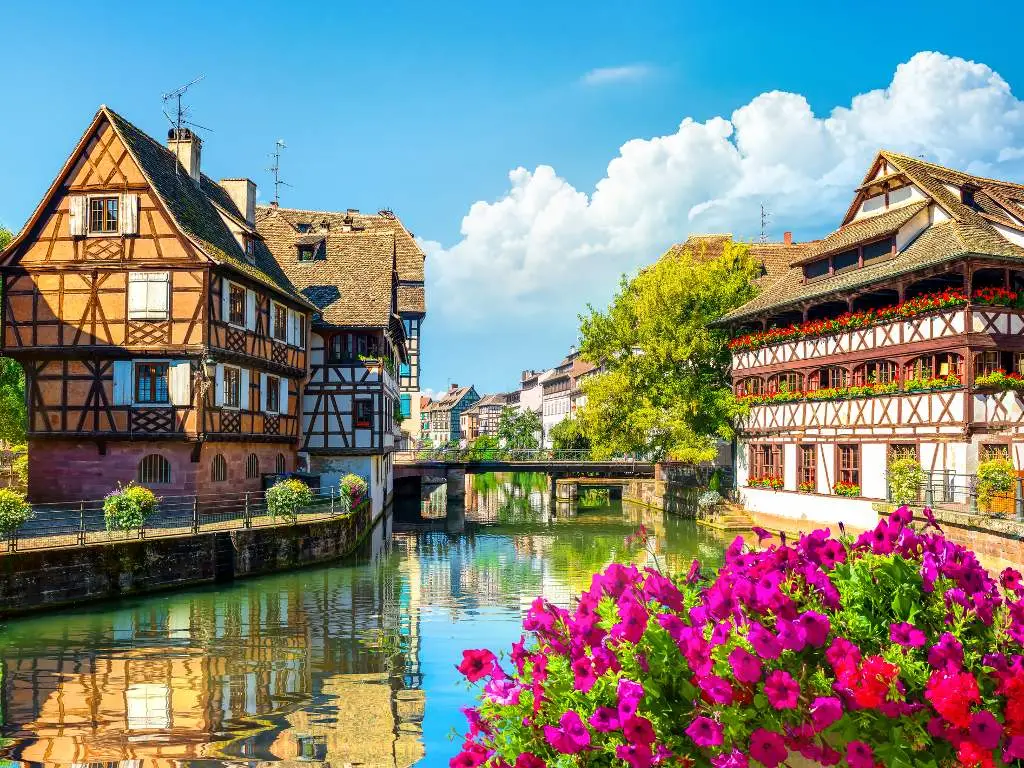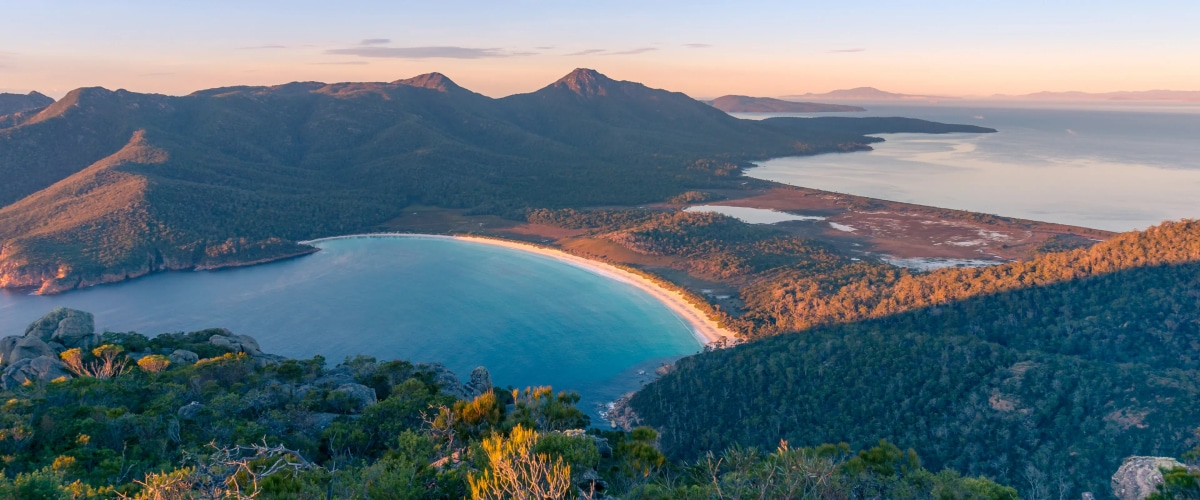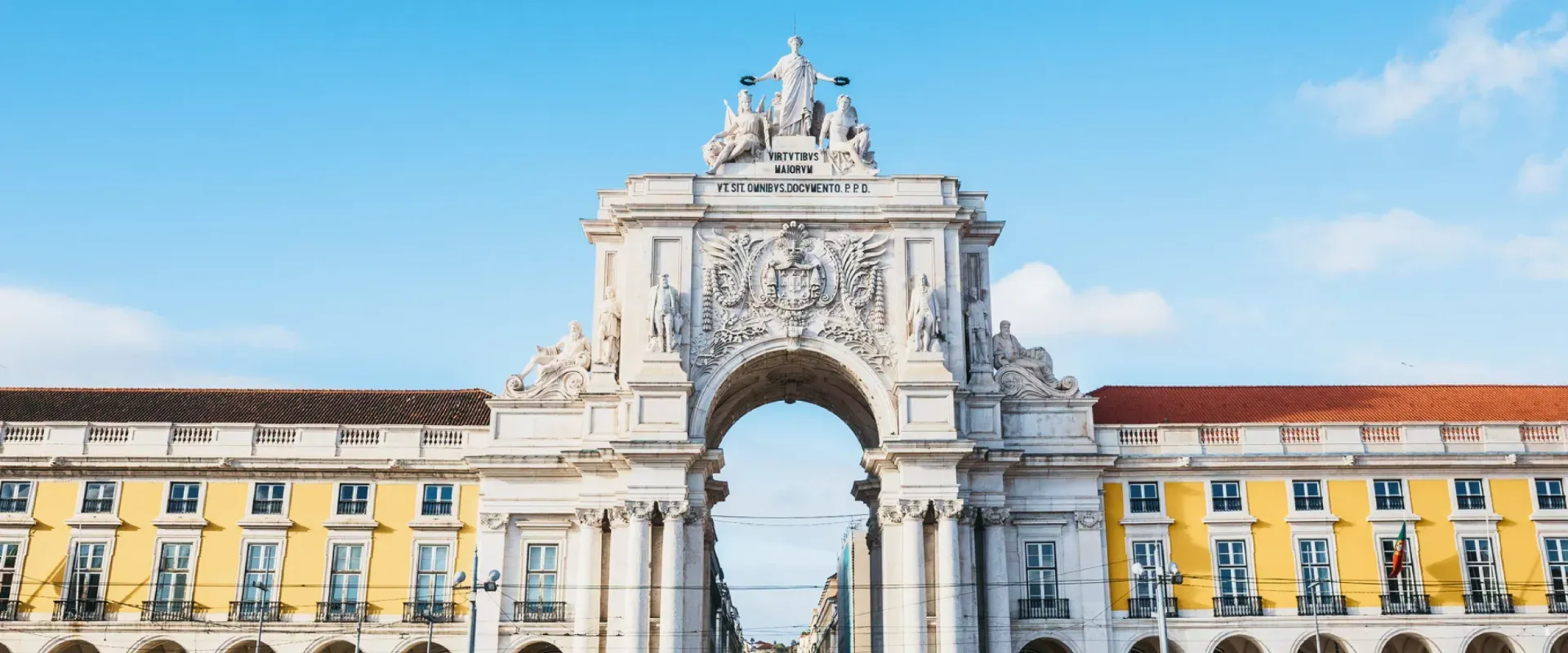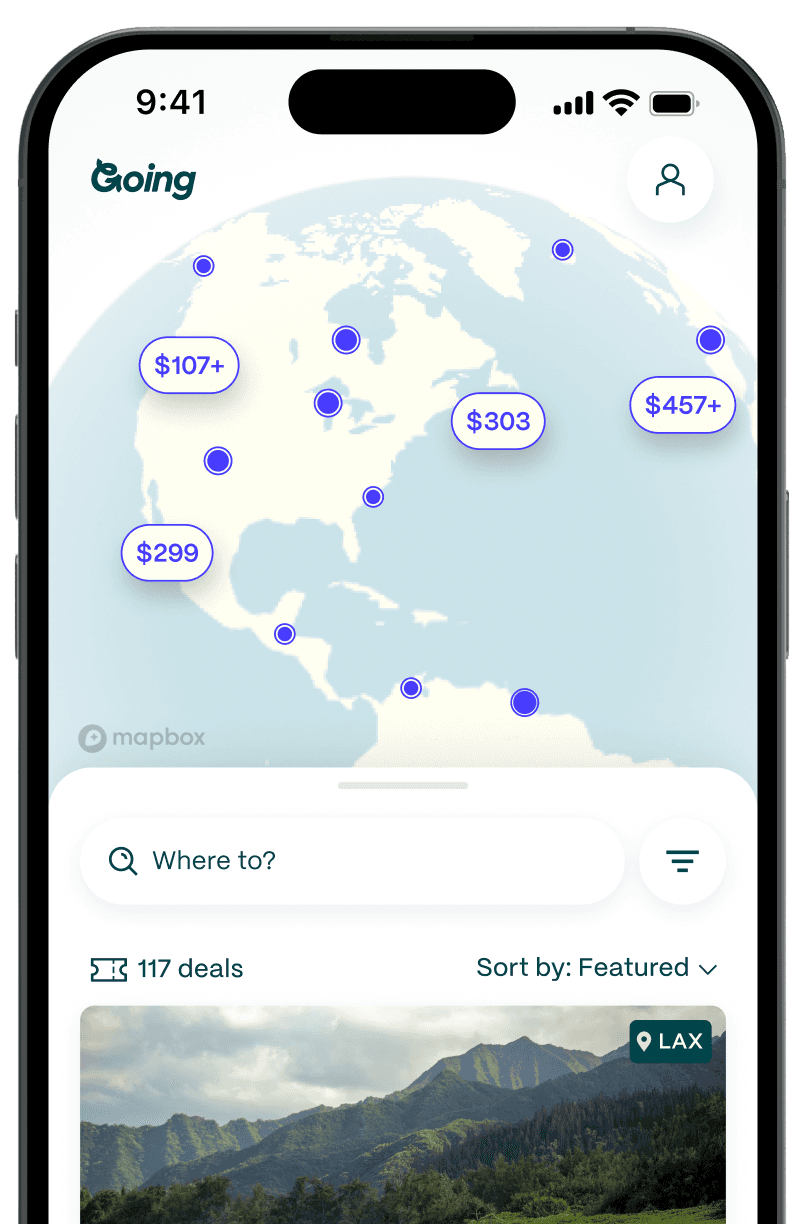
12 of the Best Day Trips from Rome
Table of Contents
Rome is centrally located on Italy’s Mediterranean side, making it easy to get around the country. From there, Tuscany, Umbria, and Campania are a couple of hours away, making it possible to visit popular destinations like the Amalfi Coast and Capri on day trips from Rome.
There are also a number of charming towns and beaches within Lazio, the region in which Rome is located. With Rome absorbing the lion’s share of tourists, other destinations in Lazio tend to be underrated. You can have spectacular palaces, beautiful gardens, and ancient archeological sites nearly all to yourself, and the relaxed vibe at these places makes for an especially nice contrast to Rome’s frenetic pace.

Amalfi Coast: 2.5-3 hours by train and ferry

Though it’s quite ambitious for a day trip, you could take the 75-minute high-speed train to Naples and then hop on a ferry to Sorrento, Positano, or Amalfi to get a taste of the glamorous Amalfi Coast, a collection of 13 towns dramatically clinging to the cliffs overlooking the Gulf of Salerno. Once humble fishing villages, the towns became an international symbol of la dolce vita in the 1950s and ‘60s, when writers, artists, and celebrities began to flock there. With picturesque cobblestone streets, pastel-painted buildings, lively piazzas, and beach clubs with lounge chairs and brightly colored umbrellas in neat rows, the towns on the Amalfi Coast symbolize summer. Just be warned that the three main towns—Positano, Amalfi, and Ravello—get extremely crowded during the peak months (especially July and August).
Ferries and buses connect the towns, but if you’re running on a tight schedule, you might want to hire a private driver. Staying overnight for at least a night or two will give you a more leisurely experience and the chance to see the towns slightly less crowded after the day trippers have left.
Tivoli: 1 hour by train

This picturesque town east of Rome is home to the majestic Villa d’Este, a 16th-century estate created by Cardinal Ippolito d’Este that’s now a UNESCO World Heritage site. The spectacular gardens filled with nymphs and grottoes are dotted with several hundred fountains fed by the Aniene River.
The design for this Renaissance masterpiece was inspired by the nearby Villa Adriana built for the Roman Emperor Hadrian in the 2nd century (also a UNESCO World Heritage Site).You can visit both in a day. It takes about an hour by train to get here from Rome’s Tiburtina Station.
Capri: 3 hours by train and ferry

By hopping on the same high-speed train to Naples and then a 50-minute hydrofoil from the port, you could spend a day on the glittering island of Capri, a symbol of the Dolce Vita. This gorgeous island in the Bay of Naples has been drawing the rich and famous ever since the Roman emperor Augustus Caesar built himself a villa there. In more recent history, Jackie Onassis, Elizabeth Taylor, and many other celebrities have raised the island’s profile again. The vibe is suitably glamorous, with designer boutiques, elegant restaurants, luxurious hotels, and exclusive beach clubs.
When you arrive at the port in Capri, a funicular will shuttle you up the steep slope to the Piazzetta, as the main square is known. From there, you can stroll the designer boutique-lined Via Camerelle and walk up Via Tragara to a panoramic viewpoint to admire the Faraglioni, a pair of sea stacks jutting out from the Mediterranean. Or just park yourself at a beach club like the famous Fontelina. Like the Amalfi Coast, Capri gets extremely crowded in the summer, so if you can spend a night or two, you’ll have a better experience.
Orvieto: 90 minutes by train

Perched on a hill, Orvieto is a medieval jewel from which you can feast your eyes on the verdant countryside of Umbria, known as Italy’s green heart. In about 90 minutes, the train will whisk you away from Rome’s Termini Station and leave you at the train station in Orvieto. From there, you have to take a funicular that climbs up the steep hill to get to the historic center.
The main sight to see is the Duomo di Orvieto, the spectacular cathedral with frescoes by Luca Signorelli and Fra Angelico. Other than that, the best way to spend your time here is just to leisurely stroll through the charming cobblestone streets lined with boutiques like L’Arpia, which sells ceramics painted with designs inspired by medieval Umbrian motifs, and enjoy a leisurely lunch at Trattoria La Palomba.
Castelli Romani: 30 minutes by train

This cluster of 16 hill towns just southeast of Rome historically drew aristocratic families who built sprawling villas here. There are also some wineries, like Poggio Le Volpi, where you can taste local wines made with varietals like Cesanese and Malvasia. This area is known for a type of rustic, casual restaurant called a fraschetta, where the specialty is porchetta, pork roasted with fennel, garlic, and rosemary that’s usually sliced and served on its own or as a sandwich.
The first town you’ll encounter is Frascati, known as the city of wine, which is an easy 30-minute train ride from Termini Station. There you’ll find a charming town square surrounded by cobblestone streets lined with shops, cafes, and restaurants.
Other towns worth visiting are Castel Gandolfo, which overlooks Lake Albano and is home to the Pope’s summer palace (now open as a museum with gardens you can visit); Grottaferrata, where you can enjoy a leisurely lunch under a vine-covered trellis at Osteria del Fico Vecchio and visit the Abbey of San Nilo; Ariccia with its monumental bridge and Palazzo Chigi (a museum in the palace of the wealthy Chigi family); and Nemi, a cute little town overlooking Lake Nemi that’s known for wild strawberries, which local bakeries use to make tartlets and other sweets. If you want to visit a few towns, the best way to get around is to rent a car or do Scooteroma’s countryside Vespa tour.
Pompeii: 2 hours by train

One of the largest and most famous archeological sites in the world, Pompeii was famously frozen in time when Vesuvius erupted in 79 CE, burying the city in volcanic ash. Spreading over 145 acres, the city was home to 10,000-20,000 inhabitants at the time of the eruption. Visiting it lets you imagine how people lived back then.
Highlights include the House of the Tragic Poet, the House of the Vettii, the Forum, Forum Baths, and the Villa of the Mysteries adorned with frescoes depicting a young bride’s initiation into the cult of Bacchus. It takes roughly two hours to get here via the Frecciarossa to Naples and then the slower Circumvesuviana train. It was recently announced that high-speed trains will connect Rome directly with Pompeii in 2024.
Ostia Antica: 1 hour by car

If you want to see how the ancient Romans lived without making the long journey to Pompeii, go to the Parco Archeologico di Ostia Antica, an archeological site that was once the thriving port of Rome with an estimated 50,000 inhabitants during the Roman Empire. Legend has it the city was founded in 620 BC, but the oldest remains on view date to the 4th century BC. Despite its proximity to Rome, it’s much more under the radar than Pompeii. You’ll see similarly impressive archaeological ruins with beautiful mosaic floors, and you’ll likely have the site to yourself. You can admire the forum, the baths, shops like boat rentals and fish markets, a bakery, a restaurant with a bar, a theater, spacious villas, humble condominiums, Roman temples, and even one of the world’s oldest synagogues.
There are some signs with explanations, but for a deeper understanding, it’s best to hire a guide like Elisa Valeria Bove, an archeologist who excavated at the site and now runs the tour company Roma Experience.
Santa Severa: 1 hour by train

In the summer, Romans decamp to the beaches, and this beach town about an hour north of the city by train or car is one of the best. A 14th-century castle stands proudly on the seashore, creating a picturesque place to lay out your towel and lounge on the beach. There are a few beach clubs where you can rent lounge chairs and umbrellas for the day and enjoy a leisurely lunch.
Isola del Pescatore is the one closest to the castle and the most atmospheric, with lounge chairs and umbrellas for rent, plus a restaurant with wooden tables and chairs painted white and turquoise. It’s the perfect spot for spaghetti with clams or a fritto misto, but be sure to book a table in advance because it’s extremely popular in the summer. The next town over—Santa Marinella—is also a popular beach town with neat rows of lounge chairs and umbrellas dotting the sand.
Pontine Coast: 75 - 90 minutes by train

There is a cluster of beach towns on the coast between Rome and Naples that are popular among Romans in the summer. Sometimes called the Pontine Coast because it’s just opposite the island of Ponza, the area is more laid back and under-the-radar than the Amalfi Coast, and tourism is mostly domestic.
The area stretches from Sabaudia to Gaeta, with San Felice Circeo, Terracina, and Sperlonga in between. The beaches here have been awarded the Blue Flag distinction for their cleanliness and sustainability, and the towns are full of restaurants, bars, and shops. Terracina has a charming medieval section with a piece of the ancient Appia Antica. Sperlonga has whitewashed buildings that might remind you of the Greek Islands. Gaeta has a charmingly gritty center and is known for a savory pie called tiella, which you can buy at bakeries and hole-in-the-wall spots. Trains will connect you to Gaeta, Sperlonga, and Terracina, but you’ll need a car to get to Sabaudia and San Felice Circeo.
Tuscia: 1.5 hours by train

This under-the-radar region between Rome and Tuscany was also popular among Rome’s aristocratic families, and it still has a fairytale atmosphere, with seemingly enchanted forests, lakes, and medieval towns where cobblestone streets are lined with stone buildings and castles that seem to transport you back in time. Viterbo is the main city in the region, but there are other, more tempting things to do scattered around.
The Sacro Bosco di Bomarzo, for example, is a mystical Mannerist sculpture park filled with larger-than-life statues of animals and mythological creatures carved out of the rock. It was created for Prince Vicino Orsini and rediscovered by Salvador Dalí. Also worth visiting is the Palazzo Farnese in Caprarola, a Renaissance masterpiece decorated with frescoes in the grotesque style (inspired by the ancient Roman frescoes found in grottoes) and a hall of maps that inspired the one at the Vatican. The best part is you’ll likely have these places to yourself. Trains connect Rome to Viterbo and Caprarola, but you’ll need a car to reach the Sacro Bosco di Bomarzo.
Maremma: 2 hours by car

In just under two hours, you can drive to this underrated part of southern Tuscany’s Mediterranean coast. The area is known for pristine beaches, charming little towns, naturally occurring hot springs like the Terme di Saturnia, and the incredible Tarot Garden sculpture park by artist Niki de Saint Phalle. Inspired by the aforementioned Sacro Bosco di Bomarzo and Gaudì’s Park Güell in Barcelona, Niki de Saint Phalle created monumental sculptures in the shape of characters from the tarot deck covered in colorful mosaics. The park is just outside the center of Capalbio, a charming medieval town. Stay for a seafront lunch or dinner at La Dogana, run by the team behind Rome’s two-Michelin-starred Enoteca La Torre.
There’s a train that takes about 1 hour and 40 minutes to reach Capalbio and from there you can take a taxi to the Tarot Garden. You’ll need a car if you want to soak in the hot springs at Saturnia.
Caserta: 1 hour by train

There are two good reasons to go to this small city north of Naples: the Reggia di Caserta and mind-blowing pizza. Built in the 18th century by King Charles III to rival Versailles, the Reggia has 1,200 rooms, a 300-acre royal park, and English gardens with over 200 species of plants and 24 sculptures. A 19th-century wing of the palace was recently restored, allowing visitors to see the bedrooms of rulers Joachim Murat (Napoleon Bonaparte's brother-in-law) and Francis II of the Kingdom of the Two Sicilies. Yet unlike Versailles, the Reggia di Caserta is so off the radar that visitors won't be surrounded by crowds of tourists as they would at Versailles.
The city is also home to I Masanielli, which was crowned the #1 best pizzeria in the world by the critics at Top 50 Pizza. And the nearby town of Caiazzo is a pilgrimage site for pizza fiends who flock there to try Fanco Pepe’s legendary pizza at Pepe in Grani. A word to the wise: you’ll need to book at least four to six weeks in advance. A high-speed train will get you to Caserta in about an hour.
See Going's deals on flights to Rome, and join today to get cheap flights from all over the world delivered right to your inbox.
Read more about Rome
Last updated August 28, 2024









